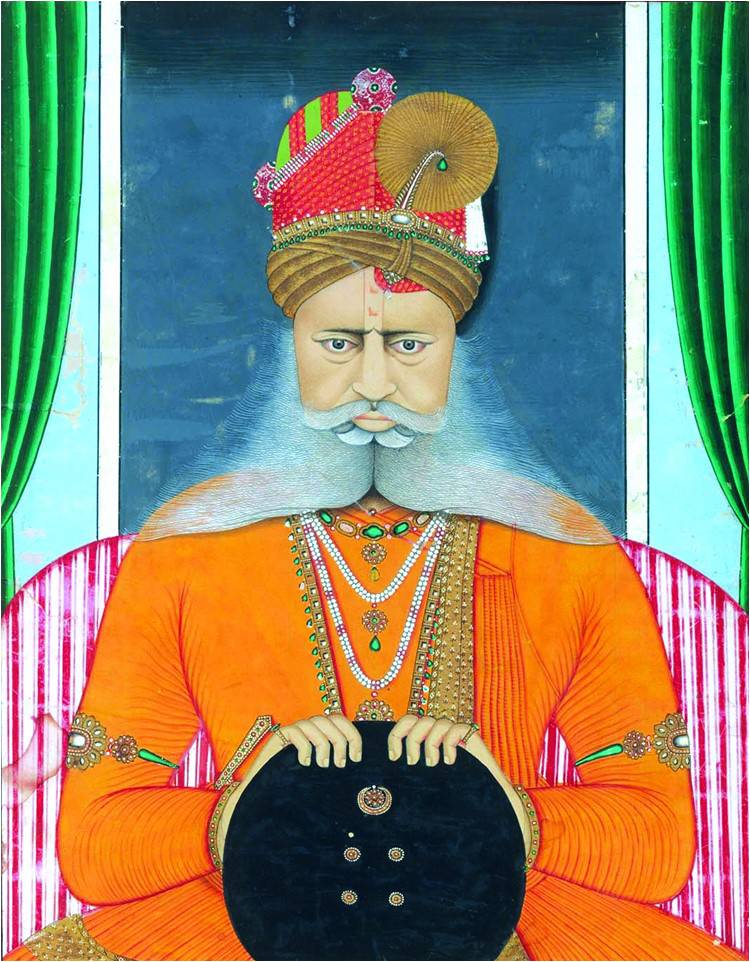
Maharaja Sardar Singh, who reigned between 1851–72, is captured here in a unique portrait. The artist, known as Chotu, seemed aware of the advancement of photography and its popularity among royal patrons. At first glance, the work seems one of almost photographic realism. However, Chotu has carefully manipulated the painting’s elements to play two and three-dimensional forms against one another, achieving a slightly surreal effect that is heightened by the composition’s commanding symmetry, even down to the cleft beard and the bosses on the shield. The regularity is offset by the asymmetry of the pleated shawl and garment and by the fantastical turban, which is like some postmodern assemblage crowning the brooding visage.
Maharaja Sardar Singh was born in 1819 and succeeded his father Maharaja Ratan Singh in 1852 at the age of 33. A large army had to be maintained to protect the borders of the state and to control the disaffected thakurs. The Maharaja appointed 18 diwans from the time of his installation up to 1869. Of all these diwans, Ram Lal Dowarkani was the most popular for his justice, good administration and honesty.
The British government granted the Tibbi llaka to the Maharaja in recognition of his services to it during the Mutiny of 1857. In 1871, Maharaja Sardar Singh subscribed Rs100,000 to the Mayo College at Ajmer. Maharaja Sardar Singh died suddenly on May 16, 1872, leaving no legitimate issue.
Maharaja Sardar Singh was born in 1819 and succeeded his father Maharaja Ratan Singh in 1852 at the age of 33. A large army had to be maintained to protect the borders of the state and to control the disaffected thakurs. The Maharaja appointed 18 diwans from the time of his installation up to 1869. Of all these diwans, Ram Lal Dowarkani was the most popular for his justice, good administration and honesty.
The British government granted the Tibbi llaka to the Maharaja in recognition of his services to it during the Mutiny of 1857. In 1871, Maharaja Sardar Singh subscribed Rs100,000 to the Mayo College at Ajmer. Maharaja Sardar Singh died suddenly on May 16, 1872, leaving no legitimate issue.

